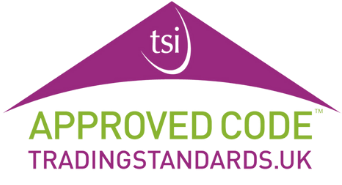Are you looking to increase your cash flow?
If so, equity release is an option worth considering.
You can you then sell your house with equity release?
Read on to find out.
What is equity release?
The term equity release refers to unlocking the equity in your house.
When you buy a property and pay off a mortgage, most of your wealth is tied up in the house. It only becomes accessible to you when you decide to sell your house.
Equity release allows you to unlock some of your home’s equity without moving house.
You can choose to take the money you release as a lump sum in smaller amounts.
Or you can do it as a combination of both. This allows you to make the choice that suits your needs.
How long does equity release take to access?
In general, releasing equity from your house takes around eight weeks.
Although it may be slightly longer or shorter, it depends on the circumstances and type of equity release.
Types of equity release
Lifetime Mortgage
Lifetime Mortgage is the most common type of equity release. This option involves securing a loan against your house.
This doesn’t need to be paid until you die or move into permanent residential care.
Once these two things happen, this payment is typically made by selling the house.
With the ‘Lifetime Mortgage’ option, you decide whether to repay this loan. Or you can let the interest accumulate for the rest of your life.
Home reversion
Home reversion involves selling part (or all) of your property while you continue to live there.
The reversion company receives a percentage of the proceeds when your home is sold. This is usually after you die or move into permanent care.
You can choose between a lump sum payment and regular instalments with home reversion.
You must also commit to maintaining your property in decent order while living there.
Can I sell my house if I have equity release?
Yes, you can sell your house if you have equity release.
In this position, the proceeds from the sale are used to pay back the equity release.
This is the first priority. Any money left after that will then go to you.
You should do a calculation before selling your house. Work out the amount that’ll go to equity release. And what the expected selling price will be.
This allows you to work out if you’ll go into negative equity. In this case, you may choose not to sell. Or you’ll need to make up the shortfall yourself.
A financial adviser can support you with this calculation.
Can I move my equity release mortgage to a new house?
In most cases, yes. Most equity release policies allow you to do this. The only condition is that the new property meets their criteria.
You should speak to the company to confirm these criteria.
With a home reversion plan, you might not have enough equity to purchase a new property. It depends on the circumstances.
Get independent, qualified advice on the process before jumping into it.
It’ll often be doable when you’re downsizing. But if you want to upsize, it can be a challenge.
How much money do I get when selling a house with equity release?
This varies on a case-by-case basis. You should confirm how much of the equity release loan needs to be repaid.
This will be taken off your proceeds. Combine this with any outstanding mortgage on the house.
And this is the amount of your selling price that’ll be taken away.
Once you’ve done the calculation, the rest is yours.
Example
If you live in a house that sells for £400,000. You may have £100,000 on an equity release loan.
And £200,000 remaining on a mortgage. You’ll get £100,000 to take away, minus any fees.
For example, some equity release companies charge an early repayment fee. Plus, your solicitor will take a fee, too. Factor these into your calculations.
















